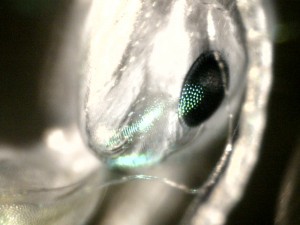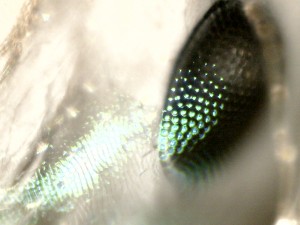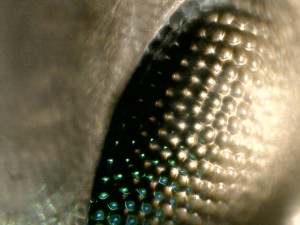February 26th, 2013 at 10:09 pm (Biology, Music)
Three plastic surgeons decided to conduct a study of finger dexterity in violin and viola players versus the general population. The paper describing their findings, which was published in The Journal of Hand Surgery, has a title that tickles my funny bone:
Assessment of the presence of independent flexor digitorum superficialis function in the small fingers of professional string players: Is this an example of natural selection?, by Godwin, Wheble, and Feig.
The paper is, lamentably, behind a paywall, and I am unconvinced by the abstract that it is worth $32.00. But never fear, The Atlantic Monthly has provided a summary and analysis of the paper in an article titled Study: Violinists’ Fates Resides in Their Left Pinky Fingers.
The gist of their argument is that you can conduct tests to determine how much independent motion a person has for their pinky and their ring finger. Go ahead, test yourself:
Hold down the index, middle, and ring fingers of your left hand, then try to bend your pinky. Now try it again, but allow your ring finger to bend as well.
About 18 percent of people can do neither, according to a study in The Journal of Hand Surgery. But in a similar group of 90 professional musicians from “three of London’s leading orchestras” (38 first violinists, 33 second violinists, 19 viola players), none lacked this ability, and all but two were able to bend just their pinky finger.
(Source: Atlantic Monthly).
I can easily bend the ring and pinky fingers together, but I have only limited curl of the pinky on its own. Does this explain why I continue to struggle to get good intonation with 4th-finger stops?

Picture from http://www.the-violin.com/violin-fingering-E.html
Apparently, Godwin et al. recommend testing children for this ability prior to signing them up for violin lessons. As a filter? Really?
As a possibly-slightly-impaired player, I’m more in favor of the Atlantic’s take: “[Instead,] music teachers could use this knowledge to go easy on kids who aren’t predisposed to the violin, instead of just telling them to practice more.”
4 Comments
2 of 3 people learned something from this entry.
February 20th, 2013 at 8:55 pm (History, Language, Library School, Vocabulary)
If I thought about it at all, I assumed that upper case and lower case were just two different cases (options) for big, or small, letters. You might therefore assume that these terms have been with us since the invention of writing, or at least writing in two sizes.
Not so!
These terms came into being with the invention of moveable type and the printing press (1450 A.D.). Typesetters would pick letters from a large case organized by letter. And — you guessed it — capital letters were in the “upper case” and the rest were in the “lower case.” The terms referred to their physical location, which quickly became convention, because then a typesetter from one press could quickly adapt to another press. Yet now the terms are so generic that they are used even in handwriting instruction. The printing press’s influence echoes down the ages!
Notice the upper-case letters had slots of equal size, while the lower-case letters (more often used) had slots proportional to their frequency of use (in English). This is what you’d need when setting a single line of type.


There were already existing terms for the two cases. Capital letters were referred to as “majuscules” and small letters were “minuscules.” But such was printing’s influence that the jargon of the trade has spread out to general use. Also, scripts that have two sizes, like this, are referred to as “bicameral” scripts (just like bicameral government!).
I learned about this in “The Coming of the Book: The Impact of Printing 1450-1800” by Febvre and Martin, which I am reading for a library school course on the history of books and libraries. This book contains other interesting tidbits, like the fact that once the printing press got going, it was very productive; skilled teams could produce a sheet every 20 seconds. Further, there’s a sordid and fascinating story behind Gutenberg and his associates Fust and Schoeffer, who took over his printing press just as he was finalizing the process, because Gutenberg defaulted on a loan; as a result, none of the books printed with his press bear his name as the publisher, although the history books have given his name full credit.
Nowadays even fonts displayed digitally continue the use of “upper” and “lower” case to distinguish these two components of the English script. The very term “font” is also an echo of early printing press technology developments, as it comes from “fondue” which means something that has been melted; early fonts were cast in metal at a type foundry. Can we imagine “tweet” or “text” or “facebook” persisting in our vocabulary for a similar span of more than 500 years?
4 Comments
4 of 4 people learned something from this entry.
February 16th, 2013 at 3:22 pm (Education, Library School, Psychology)
The Library Science program I’m in (at San Jose State Univ.) has a career guidance site that includes a recommendation to take the Eureka self-assessment to learn more about your “interests, skills, and personality characteristics.” Like all such instruments, it can only tell you what you already know at some level, but who doesn’t enjoy being categorized by a quiz?
Here is what I learned from Eureka about myself:
- Personality: “You are a natural leader.”
- Learning style: Logical/independent.
- Most important values: Education, independence, integrity, accomplishment, and health.
- Least important values: Money/wealth, recognition, security, family, and belonging.
The first one made me reflect for a little while. I don’t think of myself as a leader, and certainly not a “natural” one (“natural” to me implies something that comes with ease). If anything, I’m a reluctant leader. And yet there’s something that drives me to step in when leading (or organizing) needs doing. Maybe that’s what they meant. If only I had more charisma and less cynicism, I could go into politics :)
Their longer description of this characterization did resonate with me:
“You respect competence and intellectual abilities both in yourself and in others. You may want to understand and control the realities of life, and are on the lookout for new projects, new activities and new procedures. You are usually the driving force behind any organization or activity in which you participate.”
Also:
“You tend to lose interest once the work is no longer challenging.”
The second statement is that I am a logical/independent learner. Their text includes this gem: “If you are a logical learner, you may like using your brain for logical and mathematical reasoning.” I enjoyed this characterization:
You may use phrases like these:
- That’s logical.
- Let’s make a list.
- Follow the process, procedures or rules.
- We can work it out.
- There’s no pattern to this.
- Prove it!
Those are all very familiar!
Another great quote: “Out of order issues, materials or people may cause you stress.”
The summary of my values pretty much nails them, except that I’d place family higher. (The questions about family all were phrased as family you live with, which I don’t.)
The site also encourages you to discuss these results with those who know you to gain additional perspective. If you agree/disagree with these items, feel free to comment!
2 Comments
2 of 2 people learned something from this entry.
February 8th, 2013 at 2:45 pm (Animals, Books, History, Library School)
In my class on the History of Books and Libraries, we were recently introduced to this fun 9th century Irish poem. My own cat and I are amused.
The cat’s name, Pangur Bán, is a little tricky to decode. “Bán” means “white,” and “Pangur” seems to have been a common name for cats (maybe like Felix) that may mean “Fuller” (as in fulling cloth: beating it to remove dirt and impurities — like how cats knead blankets?).
I and Pangur Bán, my cat
‘Tis a like task we are at;
Hunting mice is his delight
Hunting words I sit all night.
Better far than praise of men
‘Tis to sit with book and pen;
Pangur bears me no ill will,
He too plies his simple skill.
‘Tis a merry thing to see
At our tasks how glad are we,
When at home we sit and find
Entertainment to our mind.
Oftentimes a mouse will stray
In the hero Pangur’s way:
Oftentimes my keen thought set
Takes a meaning in its net.
‘Gainst the wall he sets his eye
Full and fierce and sharp and sly;
‘Gainst the wall of knowledge I
All my little wisdom try.
When a mouse darts from its den,
O how glad is Pangur then!
O what gladness do I prove
When I solve the doubts I love!
So in peace our tasks we ply,
Pangur Bán, my cat, and I;
In our arts we find our bliss,
I have mine and he has his.
Practice every day has made
Pangur perfect in his trade;
I get wisdom day and night
Turning darkness into light.
Translation by Robin Flower
Comments
February 7th, 2013 at 9:46 pm (Animals, Biology)
I killed two ants the other day, for Science. “Adventures with a Microscope” instructs you in how to kill a fly so that you can remove its legs and eyes for a close look under the microscope. No flies were available, so I victimized some ants who kept trying, with mindless persistence, to invade my personal space. I put them under glass, where one asphyxiated, slowly, as I had no chloroform. The other escaped and I flicked it into some water, where it drowned. I felt more than a few twinges of guilt, staring at their huddled corpses, but then decided to examine them under the microscope.
And oh, how glorious!
40x (lowest magnification):
The segmented, slightly blurry object on the right is its antenna.
The thin filament is (I think) carpet fuzz.

Note the difference in texture between chitin and eye (zoom 100x):

Zoom 200x:

These were all taken with reflected light, since ants don’t transmit light well. But are they not beautiful and alien, seen up so close? We’ve all heard of the fly’s multi-faceted eye. I’m not sure I realized that the ant’s is likewise complex and compound.
Wow.
7 Comments
4 of 5 people learned something from this entry.





